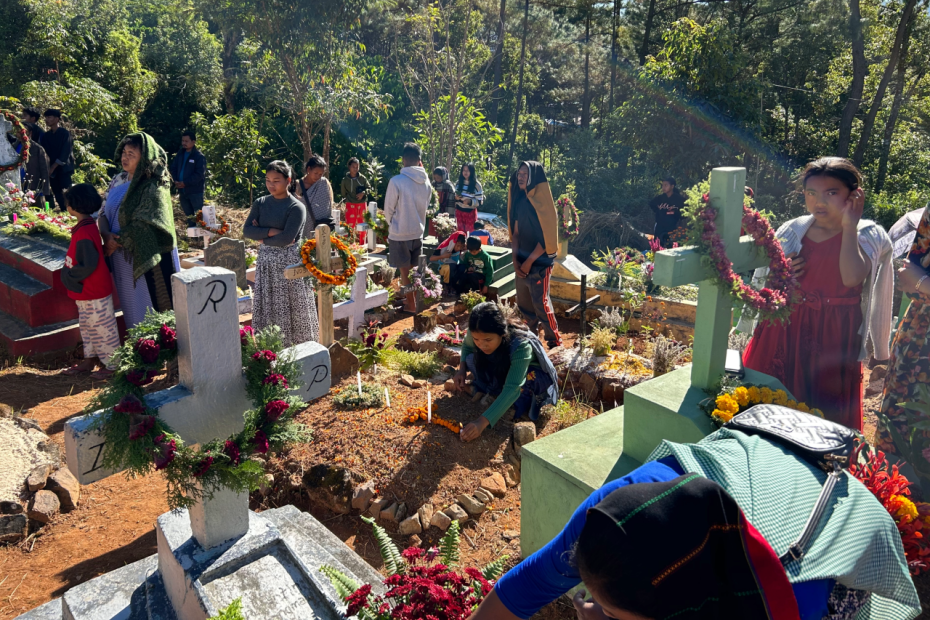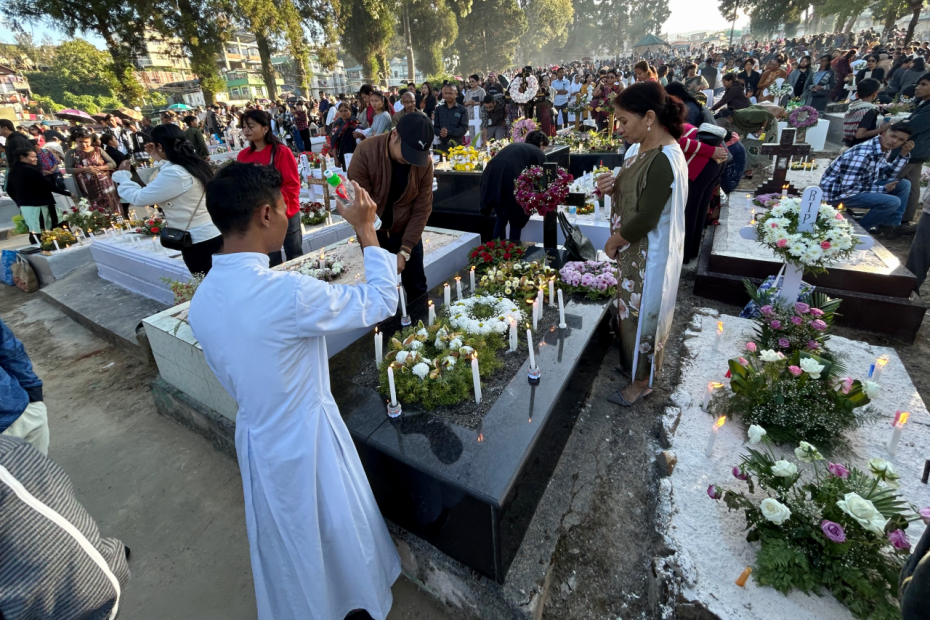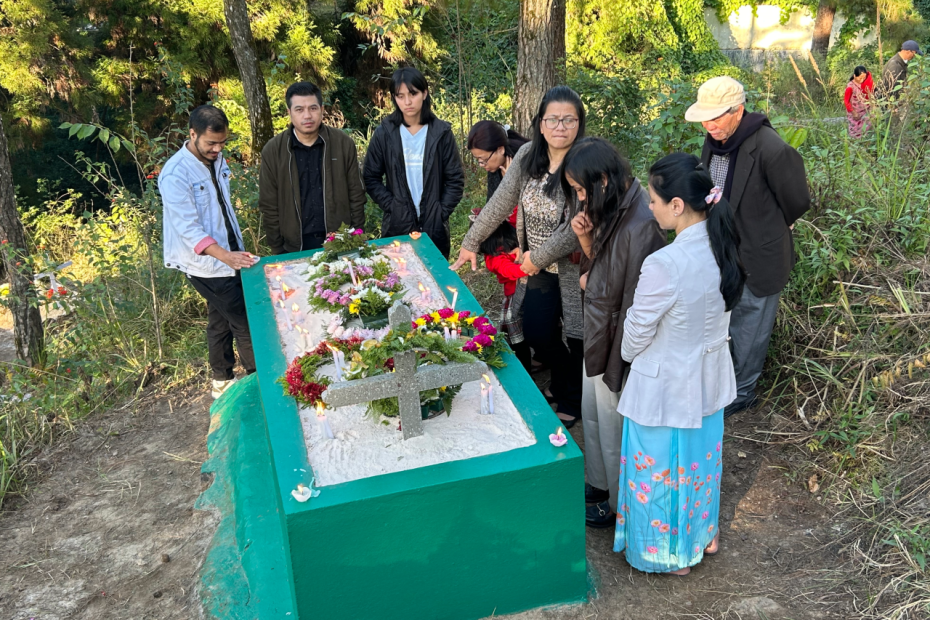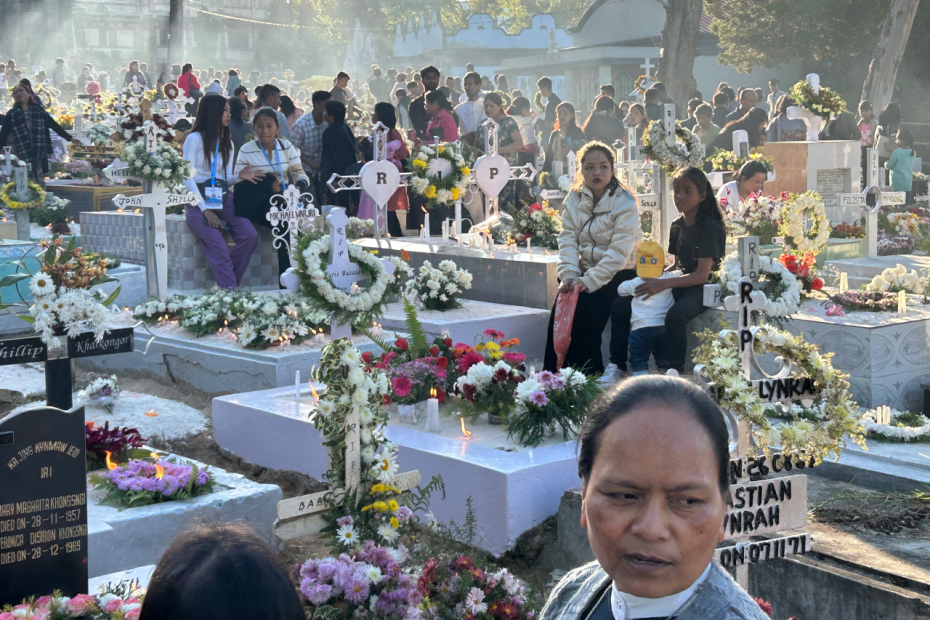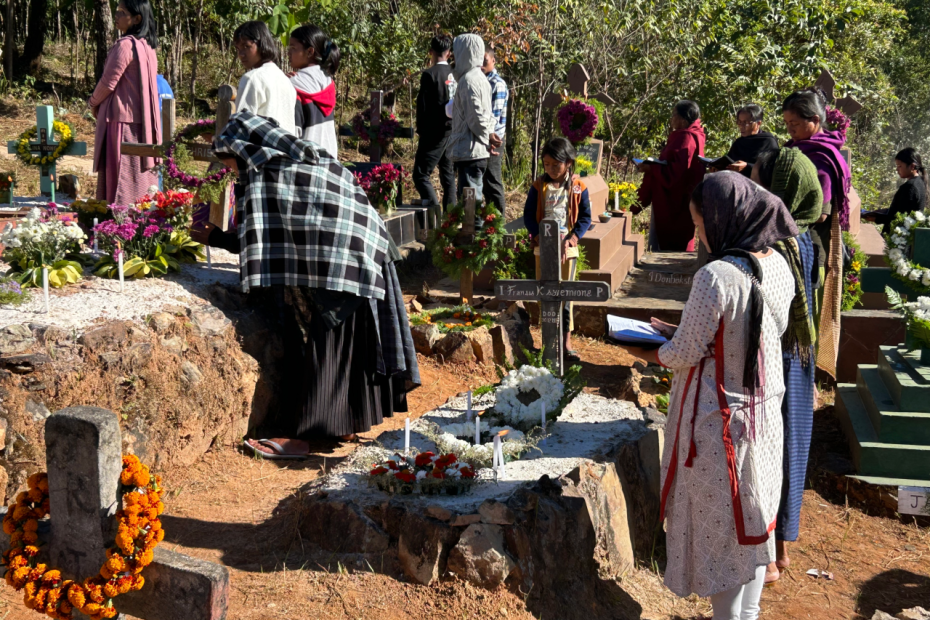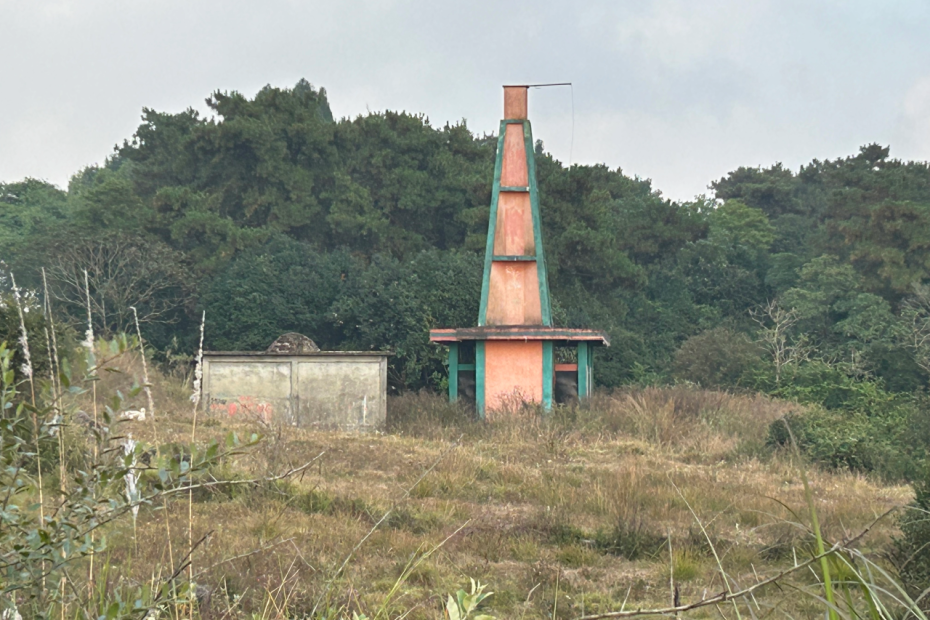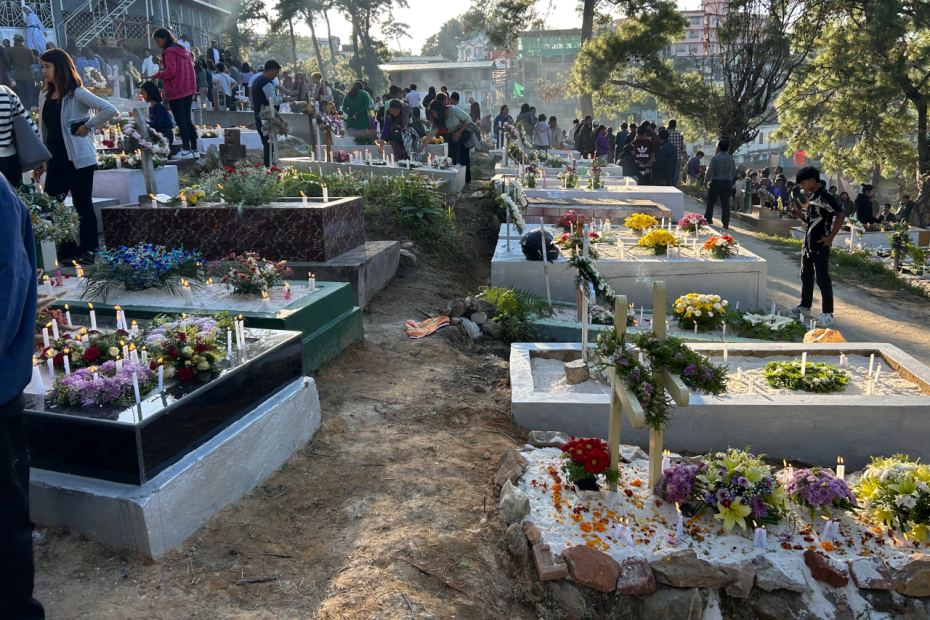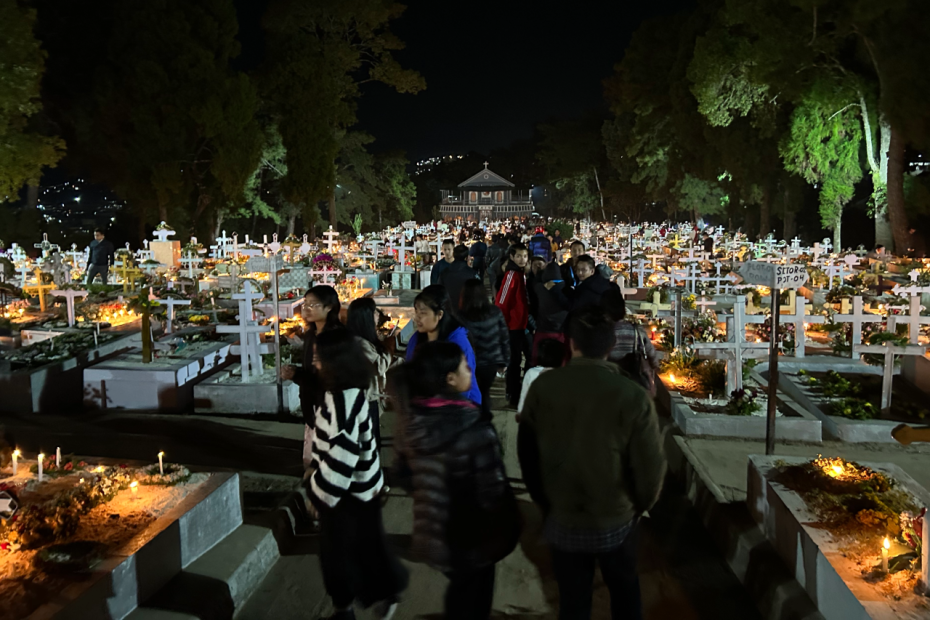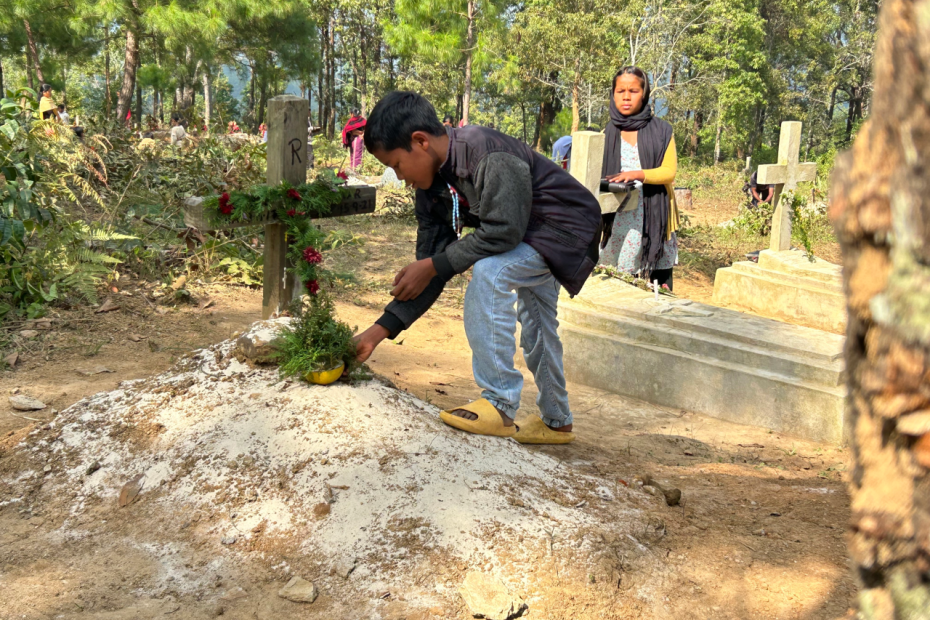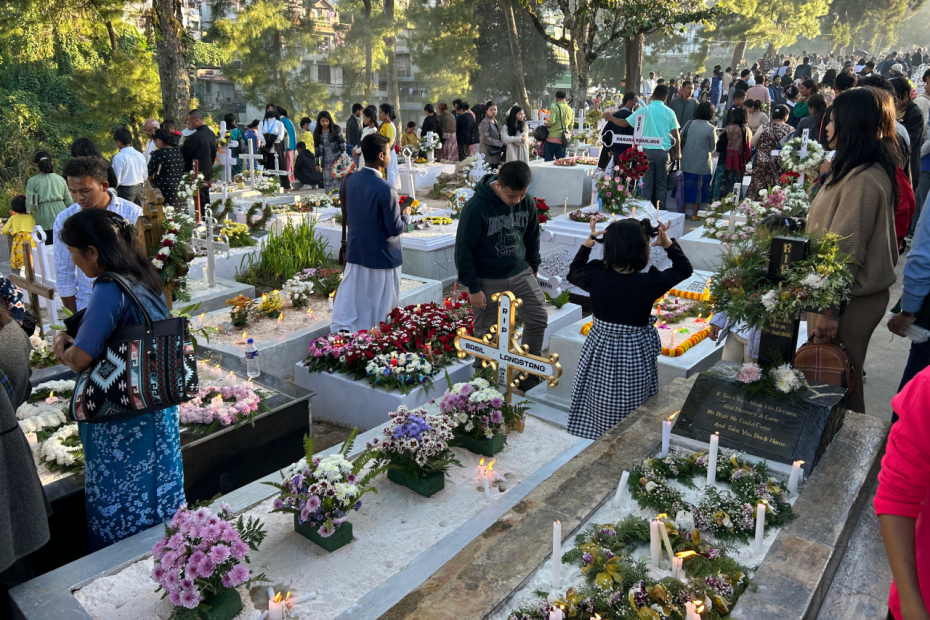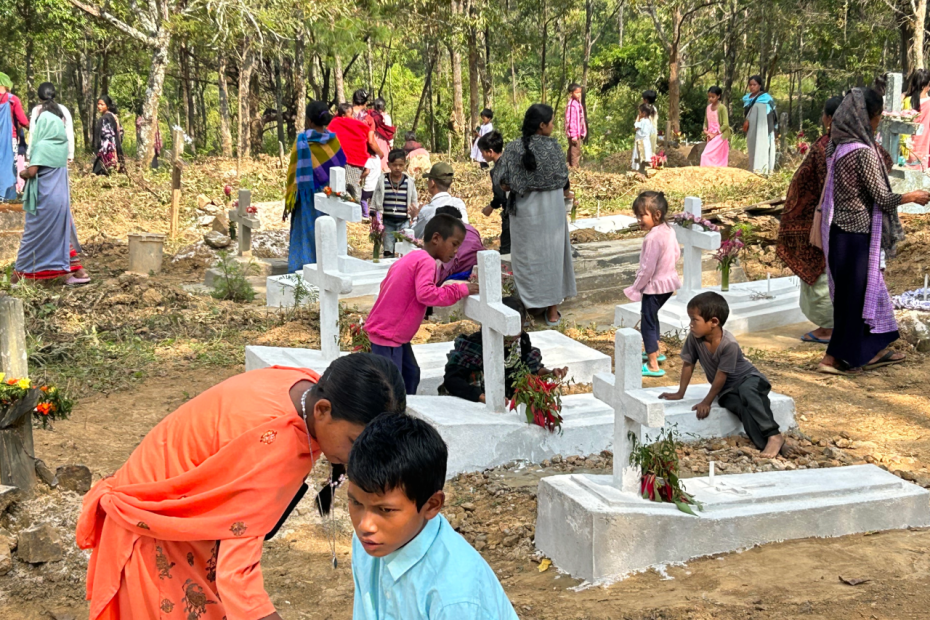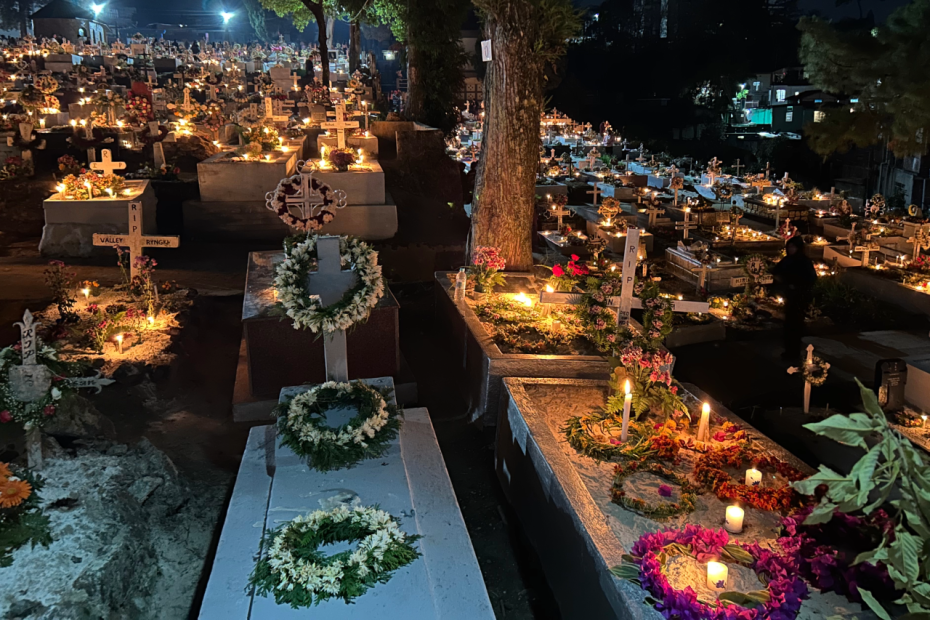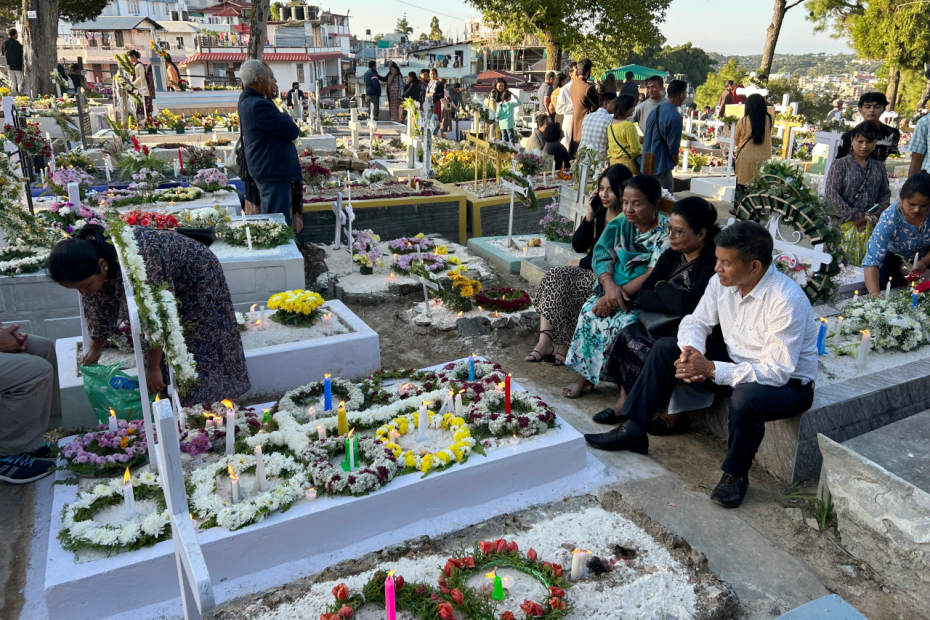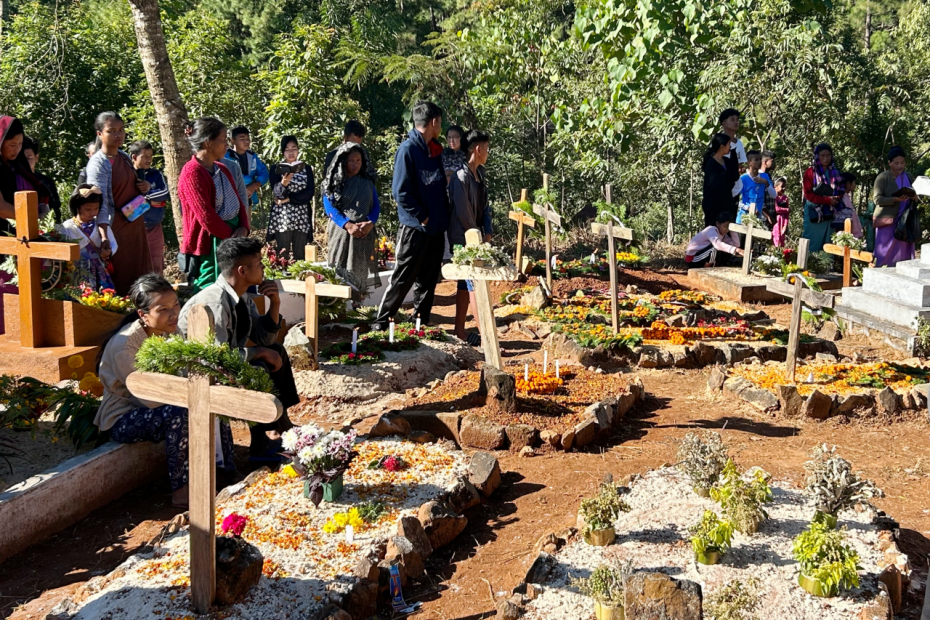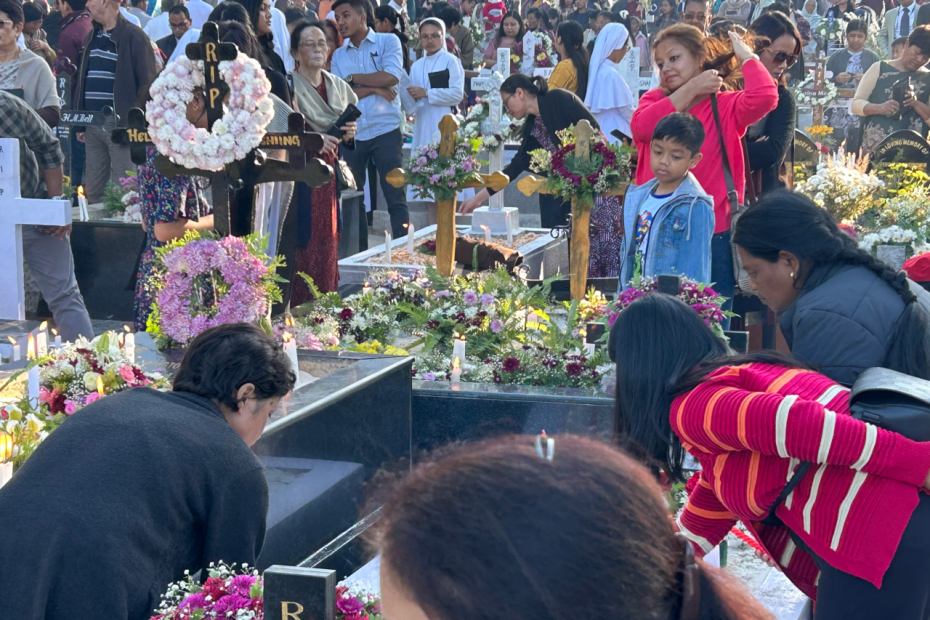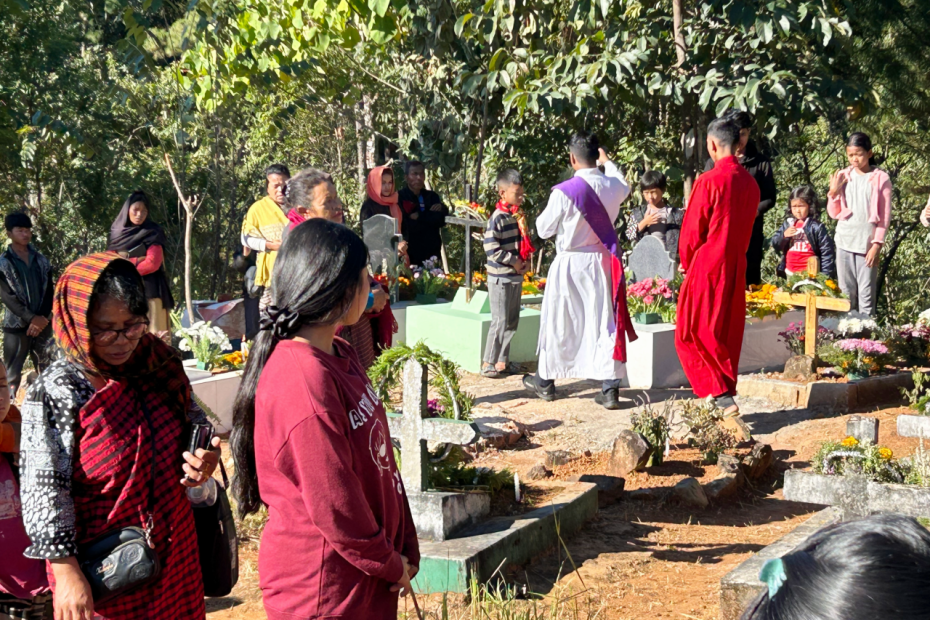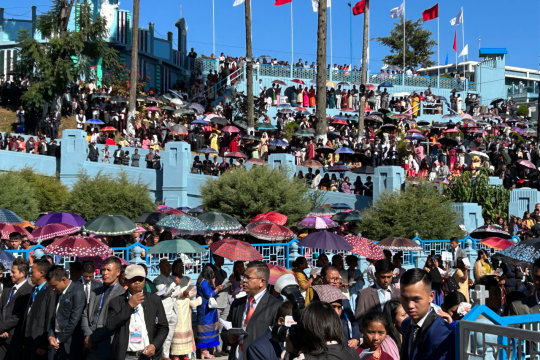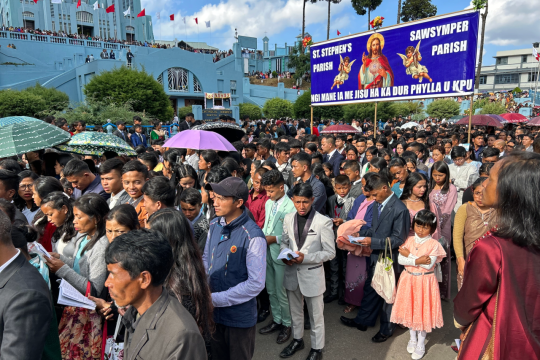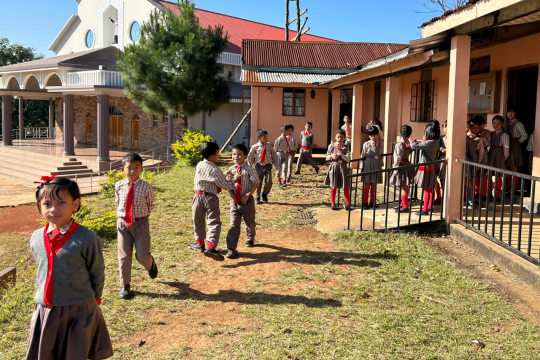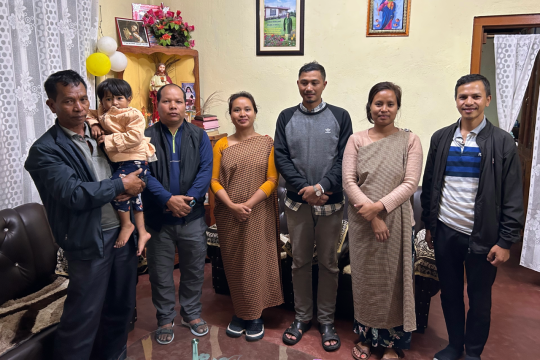November 2, All Souls’ Day, is a day of significance in the Catholic Church worldwide, though in some places it passes without much attention and in a growing number of countries is overshadowed by Halloween. For Khasi and Pnar communities of Meghalaya, India, All Souls’ Day is one of the major Catholic events of the year.1 Catholic families celebrate it by cleaning and decorating graves with flowers, lighting candles on them, and celebrating Mass in the cemetery. The All Souls celebration in the capital, Shillong, which lasts from mid-afternoon until after dark, is particularly spectacular and well-attended. Because a parish in Meghalaya typically serves as many as 20 different villages, each of which has its own cemetery, All Souls' Day masses continue throughout the early weeks of November as priests visit those villages and their cemeteries.
“We have special respect in our culture for the dead person, that we will not forget them,” Susannah, a parish leader, reported. While that attitude may derive from Khasi culture, local advocates for traditional culture also indicated that Khasis do not have a similar traditional ritual that the local Catholic ritual could echo.2 Certainly, practitioners of traditional religion saw (and still see) their funeral rites as important. “Khasis believe that if the important rites related to the dead are not properly observed their souls will never reach God’s house or ka dwar U Blei, but will roam around endlessly and will torture their living counterparts causing misfortune to them. However, if the essential rites are followed properly the living counterparts will be blessed with happiness and prosperity…”3 But in traditional Khasi and Pnar religion, bodies are partially cremated and bones are buried on family land and not prayed for annually. “These cemetery cleaning and blessing habits and prayers for the dead are not done by Presbyterians either,” one man reported. The practice of blessing graves in Khasi and Pnar (Jaintia) communities has resonances with the similar early morning prayers in Kerala, South India, but there is no direct cultural or missionary link between the communities.
At St. Francis Xavier parish in Umbir, like many other village parishes, families came for cemetery cleanup and Mass just after sunrise on All Souls’ Day, before they began the workday. They cleaned the tombs, sprinkling white power on top and laying flowers. Later, as they stood around or sat on the edges of their loved ones’ tombs, they celebrated Mass. Following Mass, the priest sprinkled each tomb with Holy Water. People came to pray for deceased parents, siblings, and children, including babies. Tombs for children were common. Parishioners said that because their dead could not pray for themselves, they were there to do so. It was unusual to see a tomb that was not cleaned in each cemetery. Some were overfull with flowers and others had just a few flowers or candles left by someone who wanted to be sure that no one was forgotten.
That same afternoon, in the much larger and more prosperous city of Shillong, families also cleaned tombstones, decorated them with flowers and candles, and prepared for a visually memorable event. Dozens of priests gathered with the archbishop for liturgy in a special chapel built for that purpose at the heart of the large Catholic cemetery. Families sat on the edges of the raised graves. Following Mass and Holy Water blessings by a legion of seminarians, families took their time visiting their deceased and each other. After sunset, the cemetery was radiant with the light of tens of thousands of candles, and groups of visitors continued to stream in to walk among the candles, flowers, and the dead.
“We believe that since the dead can’t intervene with God to pray for themselves, that we the living have to intervene for them. We can ask God’s forgiveness for them. We put the candles and the flowers out of respect for them,” a woman explained. In such a communitarian culture as this, it seems to resonate that the dead (at least those not yet in heaven) need the help of the community to thrive. The dead, like the living, can’t succeed on their own.
It matters here where the dead are buried. Whereas the bones used to be returned to the maternal family for burial on family land, today the body goes directly to a cemetery, and a spot in the core of the cemetery is coveted. Individuals or families who have somehow caused scandal or been seriously separated from the Church tend to be buried in spots adjacent to but a bit distant from the main cemetery. Even those dead, however, got blessed by the priest with holy water if some family member led the priest there.
Grieving the Khasi Way in a Catholic context
Because of the number of villages attached to a parish and the difficulty of travel to them, burial services in villages are usually presided over by a local catechist.
Throughout the land, one occasionally sees the crematories that are an essential part of traditional religious practice, a reminder that the traditional religious belief system endures. Catholics turn to their own rituals, but some Catholics reported that elements of traditional belief about the dead endure in Catholic homes. Khasi and Pnar Catholics don’t cremate their dead, but they continue to grieve in their homes for three days, allowing people to come to visit and console them. The families prepare the food for their guests and neighbors help. During that time, many Catholics still believe, the soul of the dead roams to find a perfect place to rest. Then it makes a last visit to the family. One Pnar Catholic reported, “On the third day, at midnight, the spirit of the person comes back for the last time to the family, to pay a visit and do whatever [day-to-day things] he used to do. So on the night we prepare a pot of rice, and leave the house free [doors and windows open]. At 12:00, if you have a family dog, only that dog will howl. It’s a sign that the spirit of that family will come to visit… we keep waiting in vigil. Sometimes at the threshold of the door, we leave ashes. And in the morning you can see a footprint, though no one is allowed to go through that door. And you see fingerprints on the rice pot… I’ve seen it with my own eyes. Before I didn’t believe it. But when my cousin died, I could see the footprints coming in and out… If the dead person was a carpenter, then during the night you might hear the sound of a hammer.”
- 1Halloween, incidentally, is not celebrated in this region.
- 2The entries in the articles on Meghalaya are based on group and family interviews with dozens of Khasi and Pnar (Jaintia) people in the village of Umbir at the the parish of St. Francis Xavier; in two parishes in Shillong; at St. Peter’s Parish, Jalaphet and in the village of Muknor; and in Umoid, all in the Eastern half of Meghalaya. As is fitting for Khasi culture, all of the interactions were with at least two people, usually 6 or more. Interviews were conducted in English, Khasi, Pnar, or some combination, made possible with help from a number of local translators. Traditional religion, while likely not static, is an ongoing tradition here, not a set of practices lost to history.
- 3Hayong adds, “Even today if those Khasis who hold the traditional faith want to change their religion or adopt another religion will do so only when they have performed all the important religious rites for their dead relatives in an appropriate manner.” Shanba Hayong, “Clan and Family in Khasi Society” in Family and Clan in North East India: Reflections by Christian Scholars, ed. Alphonsus D’Souza, Lalnghakthuami, Pangernungba Kechu Guwahati, India, North Eastern Social Research Centre, 2015, 59.
